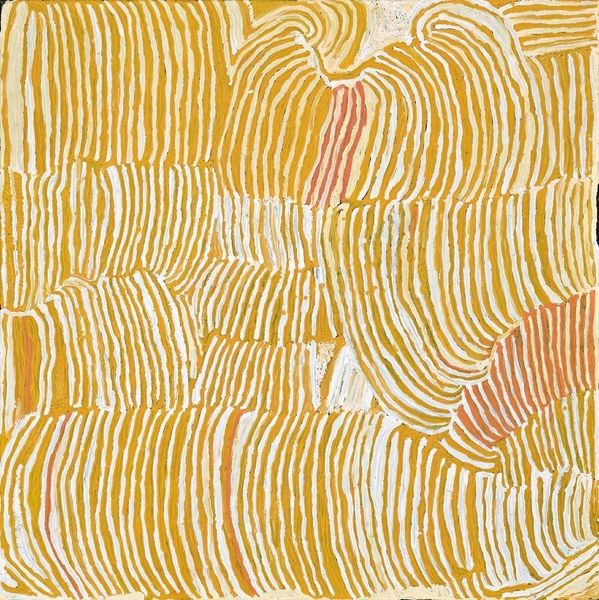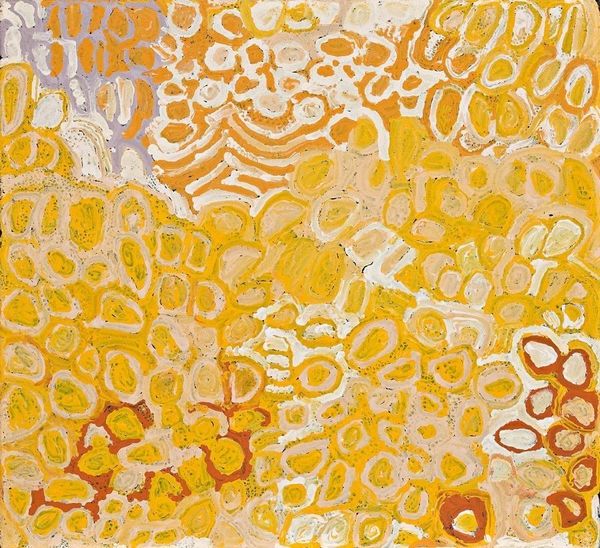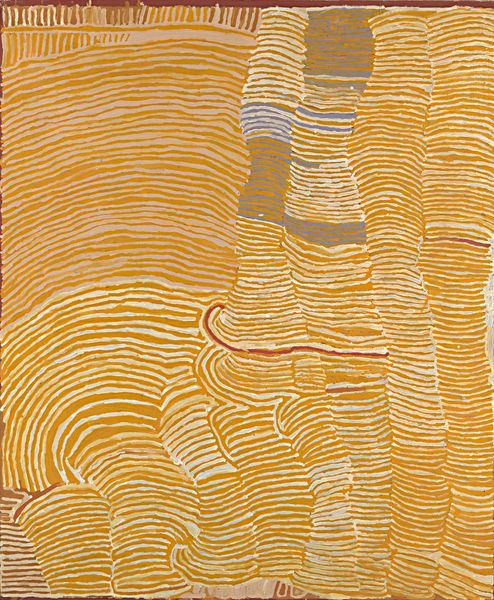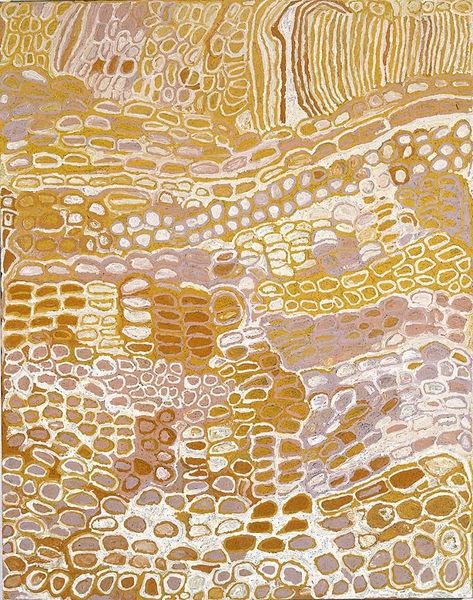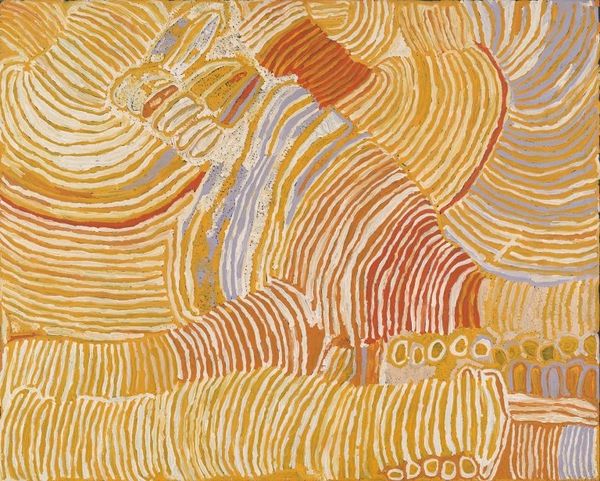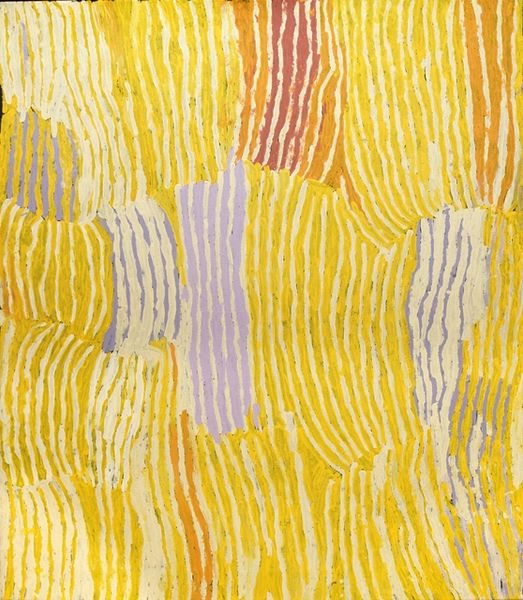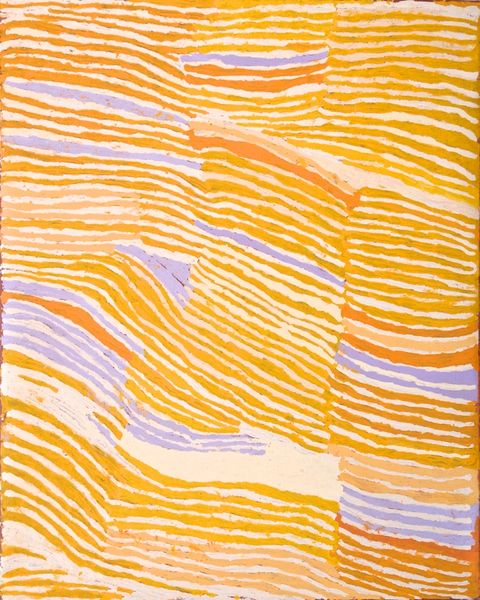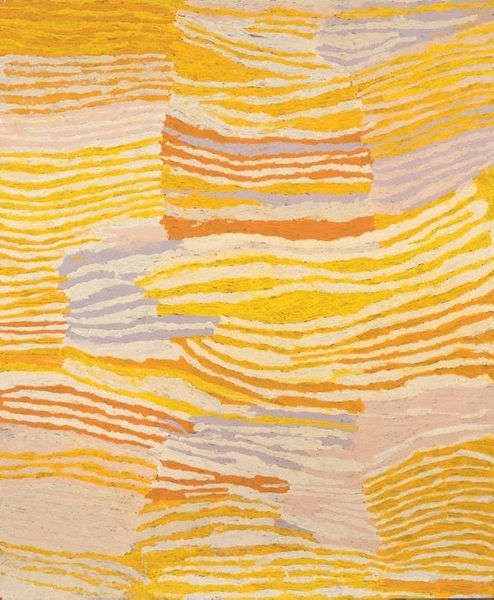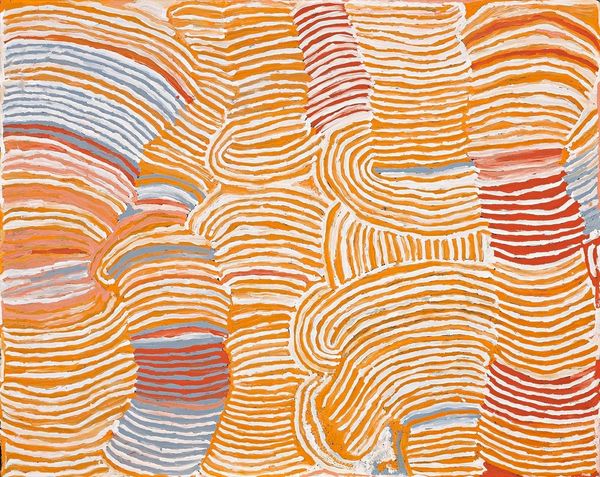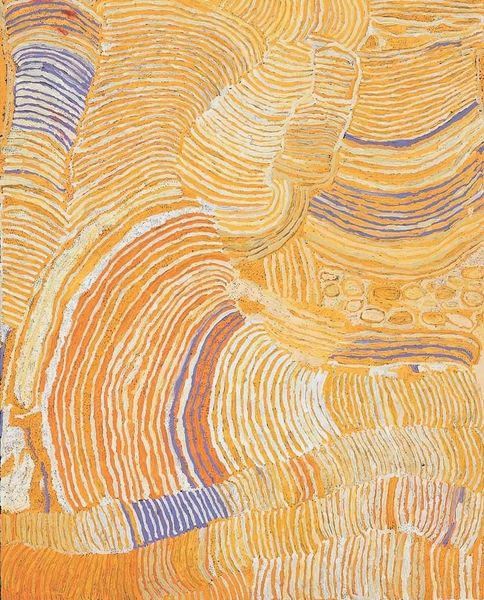
acrylic-paint
#
naturalistic pattern
#
abstract painting
#
acrylic-paint
#
geometric pattern
#
abstract pattern
#
organic pattern
#
abstraction
Copyright: Makinti Napanangka,Fair Use
Curator: Well, I see this painting by Makinti Napanangka as a window into a complex symbolic system, an Indigenous mapping of land, stories, and cultural memory all rolled into one canvas. She titled it "Kungka Kutjarra (Two Women)," dating back to 2000, painted using acrylic. What are your immediate impressions? Editor: I find myself strangely soothed by this piece; it feels like sinking into warm sand. All those ochre and white stripes, like echoes rippling across a landscape. There's something inherently grounding about the repetition, don't you think? It's a visual mantra. Curator: Absolutely, and this repetition speaks volumes. Pattern isn’t merely decorative here, it is deeply communicative. Indigenous art is so rich in its encoded narratives, you can imagine it representing generations of ancestral connection through the very same colors and patterns. Each dot, each line likely signifies places, resources, and women. Editor: "Two Women..." I keep returning to that title. Considering that the image features a semi-abstracted composition with geometric and organic patterns, do you think the symbolism is centered more around the shared stories or a geographical landmark? I imagine it is both. Curator: More likely it’s an "everywhen", if that makes sense: past, present, and future entwined. These two women exist in Dreamtime, enacting rituals that affect the tangible world. We might interpret those circles and curves up top as representations of gathered bush tucker, or possibly as sites of significant women’s ceremonies. The painting feels not only spatial but temporal, as well. Editor: That resonates—a cyclical kind of narrative where landscape and identity become interwoven. Perhaps Napanangka taps into Jungian concepts of the collective unconscious in her artwork? Curator: Quite possibly! There’s a primal element that really cuts through. We recognize an effort to symbolize basic human interactions. Those warm hues, reminiscent of earth and fire, could represent origins—the shared birthplace. These recurring symbols almost feel like a portal—a way to visually access our innate, communal experiences. Editor: Well, it's hard not to be moved. I came looking at patterns in the piece and end up seeing connections to our universal narrative, beautifully retold in ochre on linen!
Comments
No comments
Be the first to comment and join the conversation on the ultimate creative platform.
